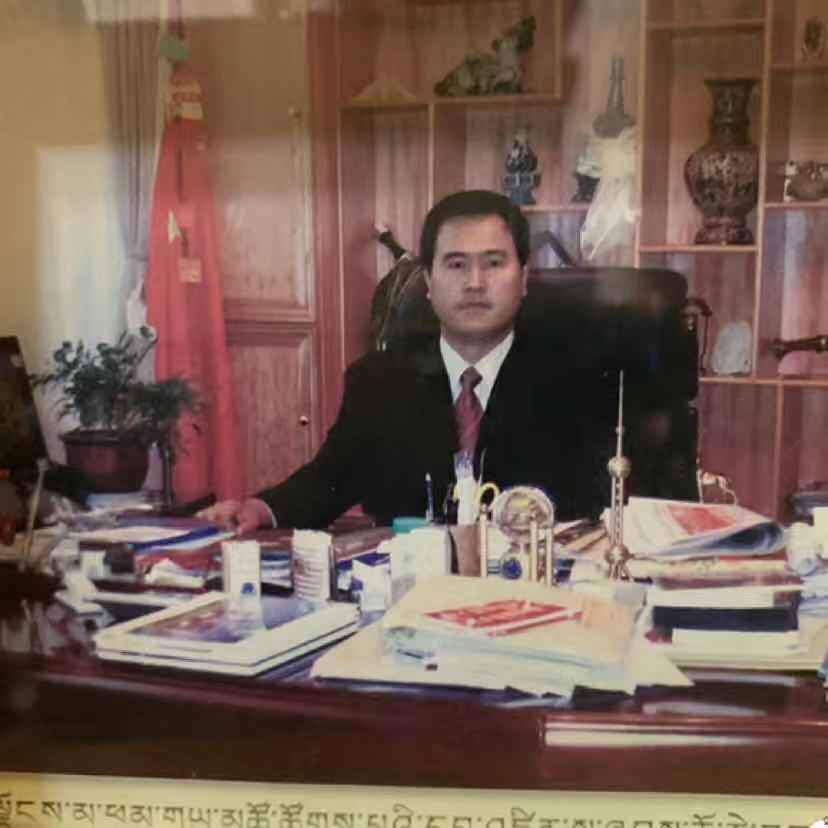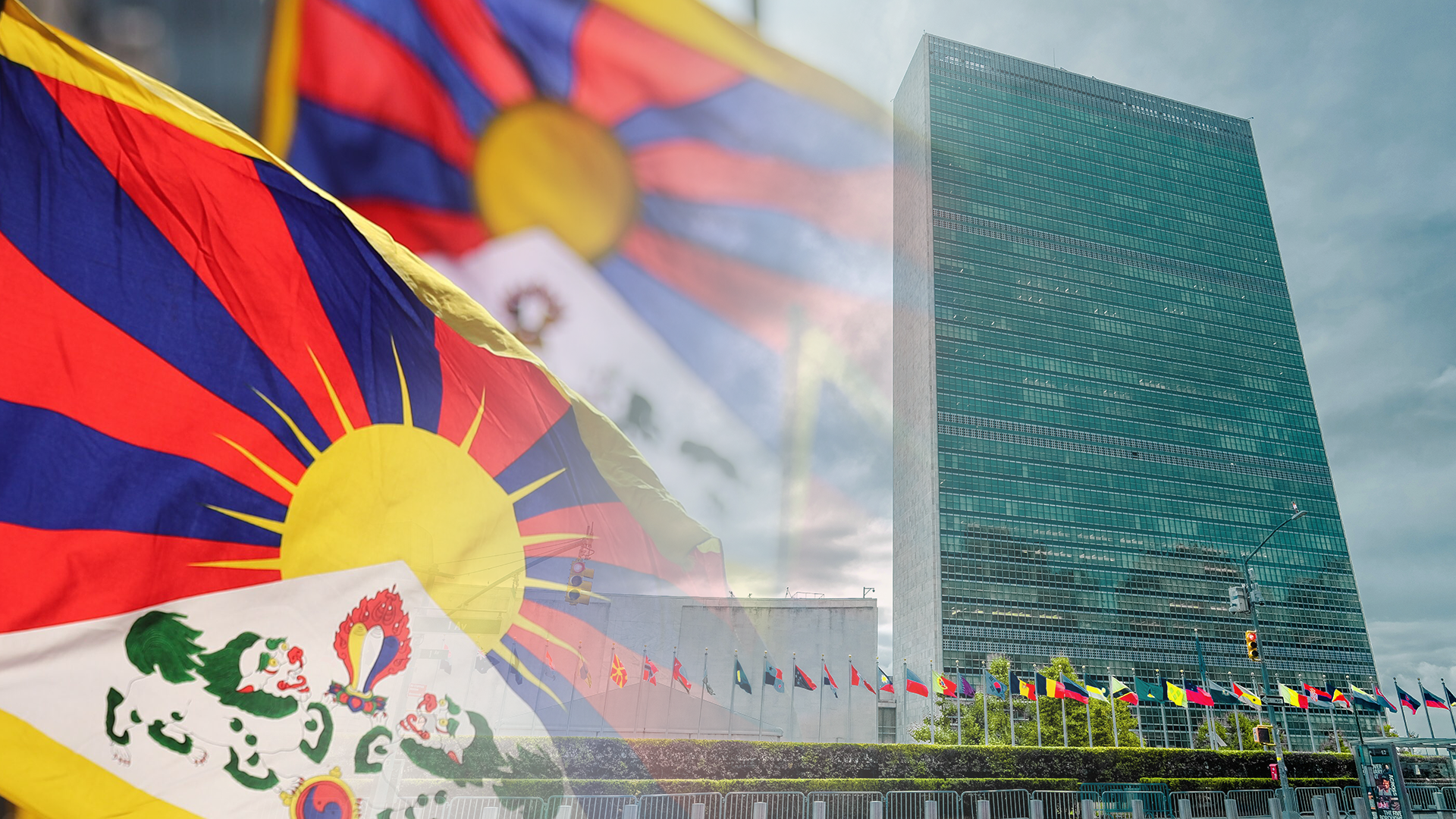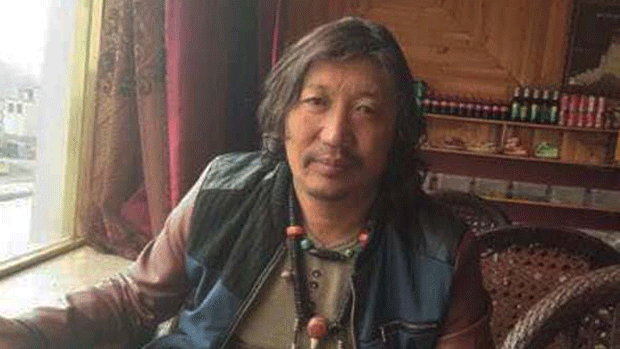
There are renewed concerns for the welfare of a Tibetan monk in critical condition in hospital following torture after his involvement in peaceful protests against the construction of a major hydropower dam in Derge (Dege), Tibet.
Gonpo Tsering, the 45-year-old head of his monastery, was tortured in custody so severely that he is now unable to speak or swallow food, faces breathing difficulties, has lost his sight, and suffers from brain injuries, Tibet Watch has learnt. He is currently in emergency care in a hospital in Chengdu, Sichuan. Concern for Gonpo Tsering was raised with the UN working group on arbitrary detention on 16 September[1] following a Tibet Watch report.
Gonpo is the head of Yena Monastery in Shiba Village, an area that has been identified by official sources as being prone to landslide hazards due to the planned construction of the Kamtok (Chinese: Gangtuo) dam in Derge in eastern Tibet. He was jailed after peaceful appeals were revealed in viral footage last year, showing fellow monk abbot Jamyang Lekshay on his knees and with raised thumbs in a humble appeal, imploring local officials to stop dam construction. Jamyang has been handed a four-year prison sentence and is being held currently at Yagnga Prison (གཡག་རྔ་བཙོན་ཁང་།, 雅安监狱), according to Tibetan sources.
Gonpo Tsering is highly respected by local Tibetans as an honest and principled monastic leader. A Tibetan source in exile with knowledge of his situation said: “Before he lost his speech after imprisonment, he had reassured everyone not to worry about him and that he had not done anything against the truth and principles as a monk.”
The two senior monks of Yena Monastery were arrested in February last year with hundreds of local people protesting against the planned Kamtok (Chinese: Gangtuo) dam in the sacred mountains of Gèndong, threatening the submersion of ancient Buddhist monasteries in the upper reaches of the Drichu or Yangtze river (Chinese: Jinsha). The plans involve the entire population of the area – monks and lay, old and young – being uprooted and displaced in their thousands.[2]
Gonpo Tsering and Jamyang Lekshay were arrested during a paramilitary crackdown after the protests in the Derge area of Kardze (Chinese: Ganzi) in Sichuan (the Tibetan area of Kham) against the construction of the 1.1 million kilowatts hydroelectric dam.
Coalition of UN rights experts ask China to account for imprisonment of nomad protester Namkyi
In another UN communication, five rights experts have asked China to account for the detention, torture and imprisonment of Tibetan nomad Namkyi, who was 15 at the time, for staging a peaceful demonstration displaying an image of the Dalai Lama.
In a formal joint communication dated 16 July, six UN Special Rapporteurs and Working Groups warned the Chinese government that Namkyi’s case demonstrates violations of international human rights law, including protections against torture, arbitrary detention, and enforced disappearance.
Namkyi was just 15 when she was arrested in Ngaba (Aba) in the Tibetan area of Amdo in October 2015 after participating in a peaceful march with a female relative while carrying portraits of the Dalai Lama and Kirti Rinpoche. The demonstration lasted around ten minutes before they were violently detained. “A group of police rushed at us,” Namkyi recalled. “They forcefully grabbed the photos from our hands, muffled our voices, pinned us to the ground, and eventually handcuffed us.”
A year later, after enduring torture in detention, Namkyi was sentenced to three years in prison for “betraying the country” and engaging in “separatist activities.” Although she was only 16, Chinese authorities altered Namkyi’s official age to 18 to sentence her as if she were an adult.
While imprisoned at Sichuan Province Women’s Prison, Namkyi was forced to carry out hard labour, subjected to harsh conditions, denied adequate food and medical care, and placed under strict surveillance that prevented contact with other Tibetan inmates. Even after her release in 2018, she remained under heavy restrictions, including surveillance, intimidation, and pressure on her family and community, leading her to escape into exile in 2023.
The UN experts noted in their formal communication to China that even in exile, “The police reportedly threatened Ms. Namkyi on the phone to ‘act better’ in exile and informed her that they had detained her parents. She later learned some of her friends had also been detained or unfriended her on WeChat and ended contact with her.”
Among other questions, the UN experts asked China to “provide information about the legal basis of the arrest, detention and sentencing of Ms. Namkyi” and “the legal basis for not informing Ms. Namkyi’s family about her arrest, detention and trial.”
UN special procedure communications on cases like Namkyi provide one of the few formal channels through which the international community can directly challenge Beijing on its treatment of Tibetan political prisoners, creating a documented record of abuses despite the constraints of such diplomatic mechanisms.
The joint communication on Namkyi was signed by Mary Lawlor, Special Rapporteur on the situation of human rights defenders; Matthew Gillett, Vice-Chair on Communications of the Working Group on Arbitrary Detention; Gabriella Citroni, Chair-Rapporteur of the Working Group on Enforced or Involuntary Disappearances; Irene Khan, Special Rapporteur on the promotion and protection of the right to freedom of opinion and expression; Gina Romero, Special Rapporteur on the rights to freedom of peaceful assembly and of association; and Alice Jill Edwards, Special Rapporteur on torture and other cruel, inhuman or degrading treatment or punishment.
[1] By the Helsinki Foundation for Human Rights, in a statement delivered by the International Campaign for Tibet.
[2] Tibet Watch and Turquoise Roof report, 21 May 2024, https://tibetwatch.org/occupying-tibets-rivers-chinas-hydropower-battlefield-in-tibet/




